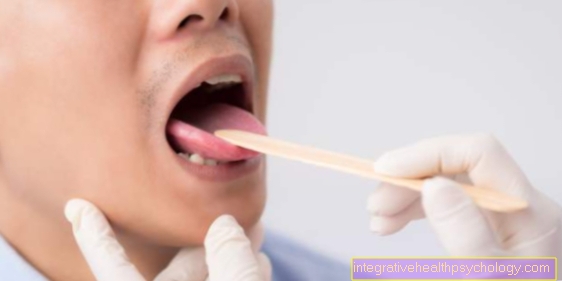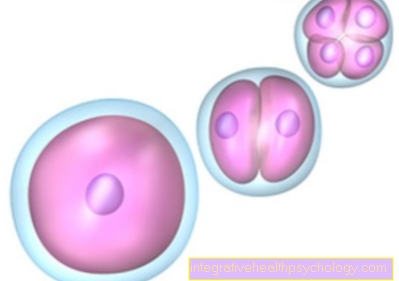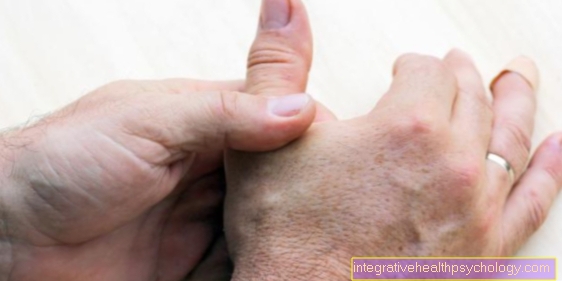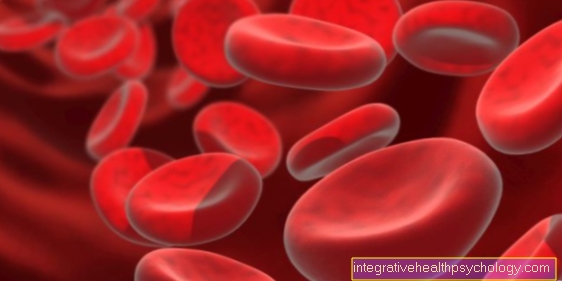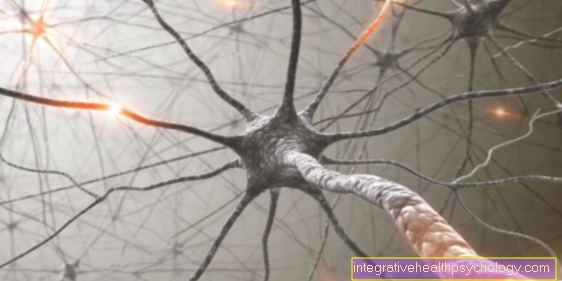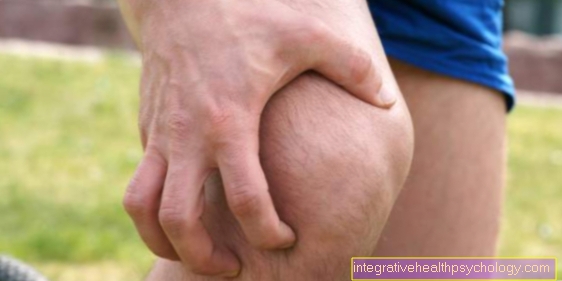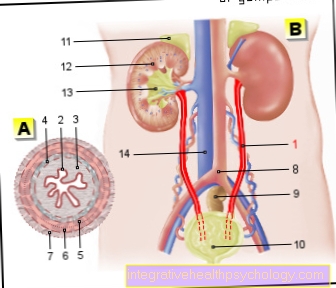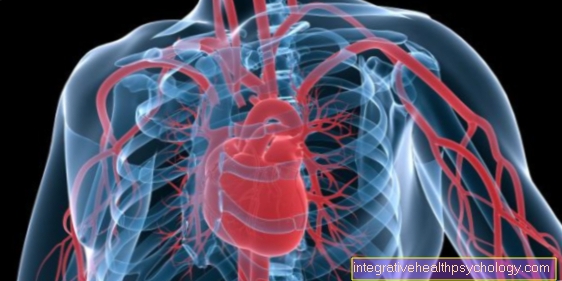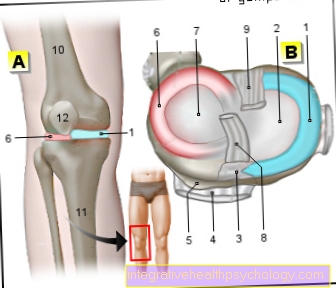Bald cartilage - what is it?
Definition - What is bald cartilage?
The term bald cartilage is based on the conventional bald head and describes a condition in which the cartilage on the joint no longer completely covers the bone.
In the joint, the bone is usually covered by cartilage, so the bone is not rubbed off directly when the joint moves, the cartilage acts much more as a protective sliding layer. Excessive stress can wear off the cartilage. If the body is not able to replicate the lost cartilage, the cartilage layer first thins out, at some point it has completely disappeared in one place. If the bone in the joint is completely bare, it is called bald cartilage.
First, read our main article on Cartilage Damage for general information beforehand: Cartilage Damage - Is It Dangerous?

How does a bald cartilage come about?
A bald cartilage is caused by an imbalance of wear and tear and the formation of new cartilage. Cartilage is the body's own material that is hardest to reproduce. In contrast to many other types of tissue, cartilage does not have its own vessels. Therefore, the supply of oxygen and other nutrients to the cartilage does not take place through the blood as usual.
Instead, the cartilage is nourished through what is known as diffusion. The nutrients are found in the synovial fluid, for example, and must now be absorbed into the cartilage. So they get very slowly into the deeper layers of the cartilage. On the one hand, this leads to the unique structure of the cartilage, but at the same time it also means that cartilage is very difficult to repair by the body once it has been injured.
The cartilage is gradually affected, especially when individual joints are subjected to constant high loads. Small defects can be quickly compensated for by the diffusion of nutrients. However, if the abrasion on the cartilage is greater than the body's ability to rebuild the cartilage, an imbalance of cartilage build-up and breakdown occurs. The protective cartilage layer in the stressed area continues to thin out until there is no more cartilage over the bone. The bone itself is now located directly on the joint surface - bald cartilage has arisen.
You can recognize bald cartilage by these symptoms
A bald cartilage becomes noticeable through similar complaints as other cartilage damage. Typically there is pain in the affected joint. These are more noticeable in particular when the joint is loaded. On the other hand, the symptoms are not as pronounced at rest.
In the course of the process, the lack of a protective layer also leads to destruction of the bone in the joint. This usually results in major functional restrictions in the joint. Not only do you experience more pain when you put pressure on it, you can also expect movement restrictions in the affected joint.
In addition to painful stress, the joint can also react with swelling and inflammation.More fluid accumulates in the joint, which further restricts mobility.
The inflammation can also manifest itself as reddening and overheating of the affected joint. Once this advanced state has been reached in the joint, a vicious circle often develops. Because of the lack of a layer of cartilage, the joint is irritated and inflamed, and the inflammation in turn damages the cartilage and bones more severely.
At this point it is advisable to deal with the following articles:
- What bone diseases are there?
- What is the significance of bone pain?
Diagnosis of bald cartilage
The diagnosis of bald cartilage consists of several examinations. A diagnosis usually begins with the anamnesis. The doctor asks the person concerned about their complaints. It is important to find out whether there has been increased stress on the affected joint.
Restrictions in movement of the joint can be examined in a physical examination. In addition, the joint should be examined for damage to other structures such as ligaments and bones.
The final diagnosis can often only be made after imaging. An X-ray is used first, if the diagnosis is not clear afterwards, an MRI can also be performed.
Only in the rarest of cases do you actually have to look into the joint to be able to see the baldness of the cartilage. This would be possible within the framework of an arthroscopy, in which a therapy for baldness can be carried out directly.
For more information, see: How does an arthroscopy work?
Arthroscopy for bald cartilage
Arthroscopy is a minimally invasive surgical procedure. Only small incisions are made in the area of the joint. Through these, various small surgical devices can be pushed into the joint on long rods. Usually two to three such joint approaches are necessary. A camera is inserted into the joint through one access, and surgical instruments such as forceps or small scalpels can be inserted through the other accesses.
Arthroscopy is a particularly joint-gentle surgical procedure, as the joint is only minimally exposed.
When treating bald cartilage, the instruments first remove the damaged cartilage material, and then new cartilage cells can be inserted into the resulting hole. Alternatively, microfracturing is performed.
You can find all the important information on the subject at:
- Arthroscopy complications
Treatment of bald cartilage
The therapy of bald cartilage aims to let the cartilage grow back over the bone. There are different methods of doing this.
One can either try to grow cartilage cells from the body's own stem cells. A third-party donation is also possible. These cells can usually be placed in the affected joint during an arthroscopic operation.
Microfracturing is also a therapeutic approach. The bone of the joint is provided with several holes. This is intended to stimulate the bone to form bone and cartilage substitute material.
In addition, symptomatic therapy with painkillers can be carried out. It is also advisable to maintain controlled physical activity. This also creates an incentive in the joint to form new cartilage material. However, you should avoid overloading.
Prosthesis as therapy against bald cartilage
A prosthesis can be used as a joint replacement if the affected joint is so damaged that conservative treatment can hardly improve the symptoms. With the joint prosthesis, both bony parts of the joint are replaced by artificial material. The prostheses used should be as lifelike as possible so that the same movements are possible as with an endogenous joint.
The knee joint is a small exception in prosthetics. This consists of several individual joint parts. These can be replaced individually using partial dentures. For example, only one sled prosthesis can be used in the event of isolated damage to the inner knee joint surface. The outer part of the knee joint remains in this case.
It is important at this point that you deal with the main topic "prosthesis" with the help of our articles and thus receive sufficient information:
- Causes that lead to an amputation
- The most important thing about prosthesis fitting
forecast
Bald cartilage is a very advanced type of cartilage damage that cannot be reversed. However, you can treat the symptoms with various therapeutic options and thus slow down the progression of the disease.
Recommendation from the editor
Additional information on the subject can be found at:
- Osteoarthritis and the consequences
- Cartilage damage in the shoulder joint
- Course of osteoarthritis
- Activated osteoarthritis - what is it?
- Cartilage damage in the knee





